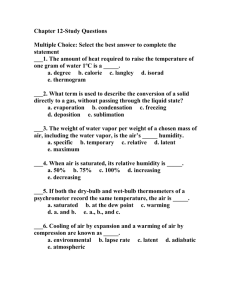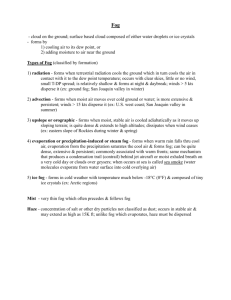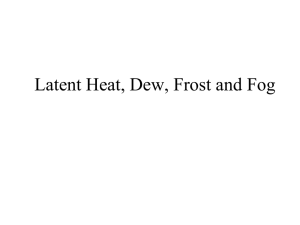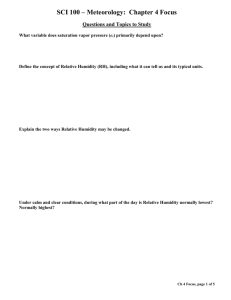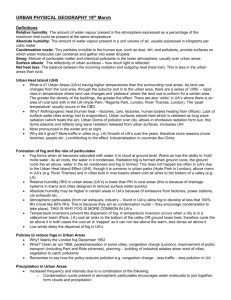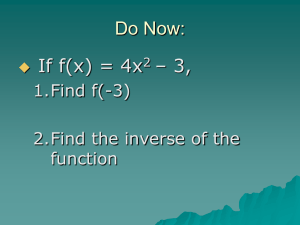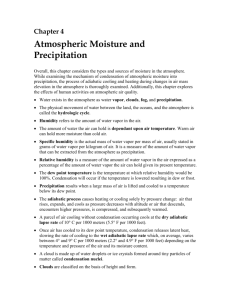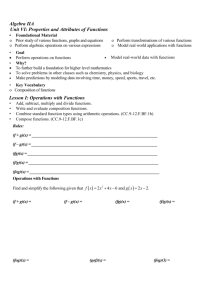Water in the Atmosphere
advertisement
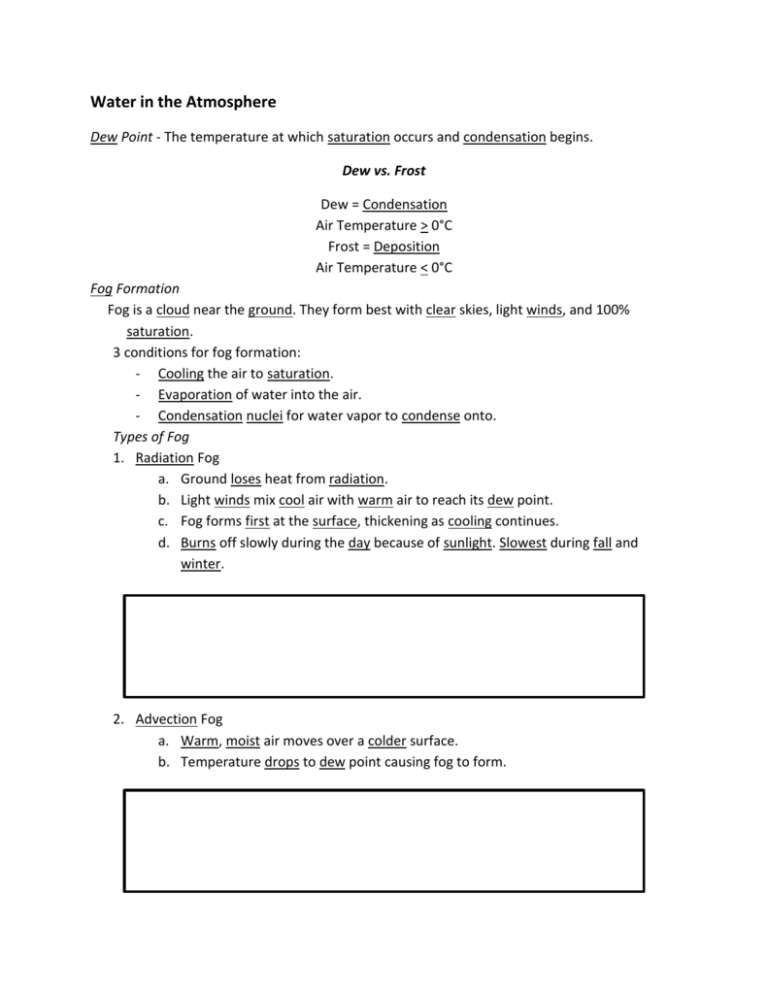
Water in the Atmosphere Dew Point - The temperature at which saturation occurs and condensation begins. Dew vs. Frost Dew = Condensation Air Temperature > 0°C Frost = Deposition Air Temperature < 0°C Fog Formation Fog is a cloud near the ground. They form best with clear skies, light winds, and 100% saturation. 3 conditions for fog formation: - Cooling the air to saturation. - Evaporation of water into the air. - Condensation nuclei for water vapor to condense onto. Types of Fog 1. Radiation Fog a. Ground loses heat from radiation. b. Light winds mix cool air with warm air to reach its dew point. c. Fog forms first at the surface, thickening as cooling continues. d. Burns off slowly during the day because of sunlight. Slowest during fall and winter. 2. Advection Fog a. Warm, moist air moves over a colder surface. b. Temperature drops to dew point causing fog to form. 3. Up-slope Fog a. Warm, moist air moves towards slope. b. As air rises with terrain, it cools to condensation temperature. c. Fog forms on slope. 4. Valley Fog a. Air cools at high elevations b. Cool air sinks downslope into valley. c. Cold air drainage reduces air temperature in valley to dew point. d. Fog forms in valley. 5. Evaporation Fog a. Cold air lies over a warmer body of water. b. Evaporation from water surface causes saturation on fog. Clouds High Level Middle Level Lower Level Vertical Formation Stratus/strao- = form in layers Cumulus/cumulo- = grow upward Latin=heap Cirrus/cirro- = feathery Latin = curl of hair Alto- = 2000-7000 Latin = high Nimbus/nibmo- = dark/rain Condensation Level – level at which condensation for cloud formation occurs. Convective Clouds 4. Water vapor condenses to form cloud. 3. Rising air organizes into thermals. 2. Warm, moist air builds up. 1. Sunlight warms surface and evaporates water. Warm, moist air raises temperature. Moisture condenses as air cools. Relative humidity increases. Cool air depleted of moisture sinks and warms. Relative humidity decrease. Precipitation Rain – water vapor that has condensed into water droplets. The droplets fall to Earth as liquid. Freezing Rain – Rain falls as liquid because air in the atmosphere is above freezing. Surfaces are below freezing so rain freezes on impact. Ice sticks to surfaces causing it to be a glaze of ice. Sleet – Starts to fall as rain. Air temperature in atmosphere cools rapidly. Rain freezes while still falling. Ice does not stick to surfaces, but accumulates on the ground. Snow – water vapor changes to ice crystals (solid). Snow falls to Earth frozen because the atmosphere and surface temperatures are below freezing. Hail - Occurs in thunderstorms. Updrafts carry rain to extremely cold areas of the atmosphere where they freeze. Hailstone falls down until caught by another updraft. Continues to circulate and grow larger. Hail falls when the updraft can no longer support the hail stone.
